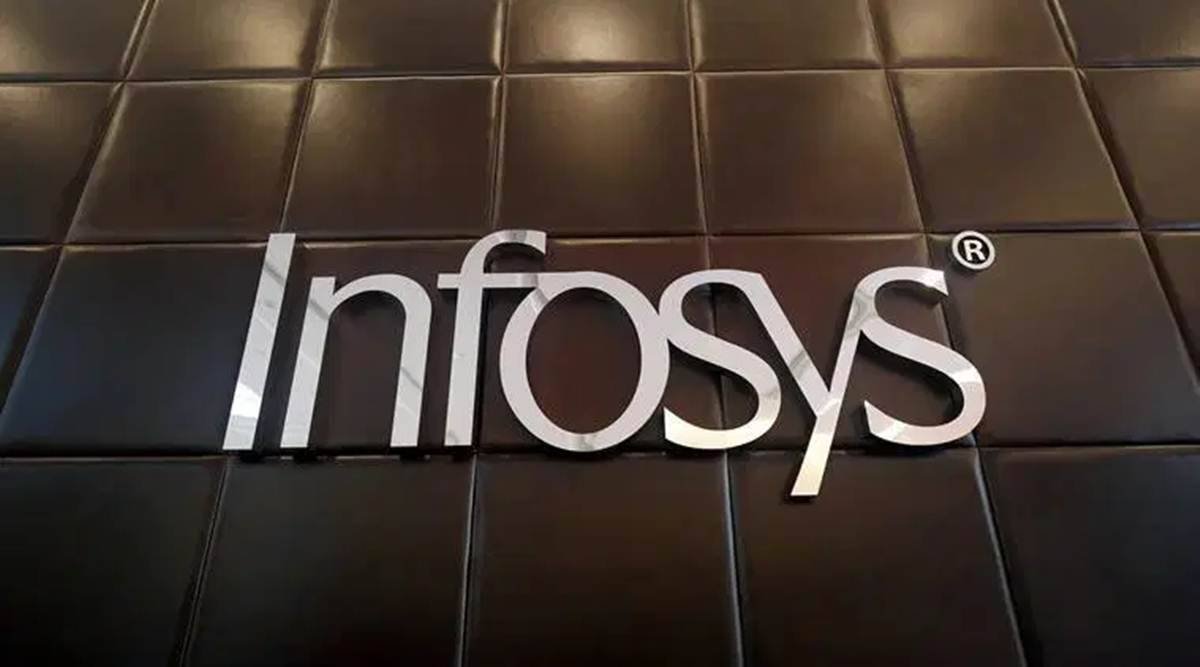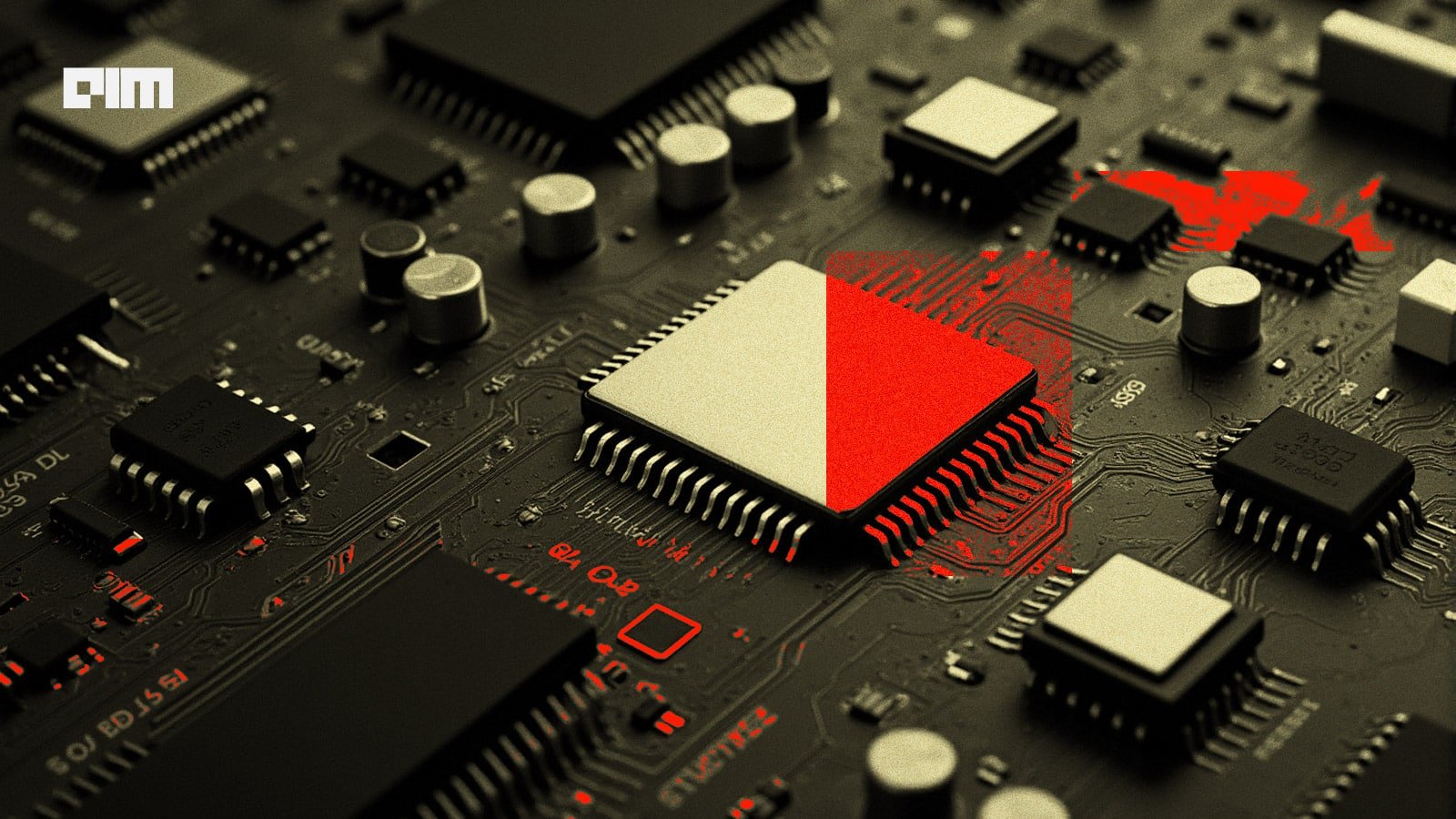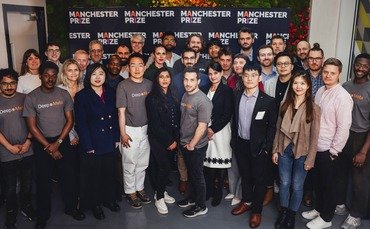Jobs & Careers
Infosys Signs 10-year Deal with American Clothing Company HanesBrands

The tech firm will serve as a strategic collaborator in its client’s digital business applications and data landscape, Infosys said in a statement.
As part of this collaboration, the IT company will deploy its proprietary platforms, Live Enterprise Automation Platform (LEAP), integrated within Infosys Topaz, an AI-first suite of services, solutions, and platforms.
The initiative will harness generative AI and AIOps technologies to help HanesBrands modernise core operations, enhance agility, simplify its IT landscape and unlock greater value from data.
By embracing AI-first technologies, intelligent automation and AIOps, HanesBrand
Jobs & Careers
Tendulkar-Backed RRP Electronics Gets 100 Acres in Maharashtra for Semiconductor Fab

The Maharashtra government has allocated 100 acres in Navi Mumbai to RRP Electronics for the establishment of a semiconductor fabrication facility. CM Devendra Fadnavis handed over a letter of comfort to the company, which plans to relocate a fab from Sherman, Texas, with a production capacity of 1.25 lakh wafers per month.
The project is backed by former cricketer Sachin Tendulkar and marks a significant step for India’s semiconductor mission. The new fab is expected to boost industrial growth, generate employment opportunities and enhance supply chains in the state.
“This allotment of land firmly positions Maharashtra at the heart of the India Semiconductor Mission roadmap. Our government is fully committed to extending all necessary support, be it in infrastructure, policy facilitation or skill development, to ensure the success of this initiative,” Fadnavis said.
He added that the facility would accelerate industrial growth and reinforce Maharashtra’s role as a hub for high-technology manufacturing.
Rajendra Chodankar, chairman of RRP Electronics, said, “We are thankful to the Maharashtra government, the honourable chief minister and his team for the continued encouragement and support towards enabling the state to take pioneering initiatives for the semiconductor ecosystem. This acquisition is a landmark step in our journey to make India self-reliant in semiconductors.”
The move comes a year after Maharashtra launched its first outsourced semiconductor assembly and test (OSAT) facility in Navi Mumbai, which was established by RRP itself. With the new fab, the state strengthens its position in the global semiconductor value chain.
Earlier in May, HorngCom Technology of Taiwan entered into a strategic collaboration with RRP to expand its OSAT capabilities in India. The agreement followed a successful technical assessment of RRP’s semiconductor facility in Mahape, Navi Mumbai, and marked HorngCom’s latest move to scale its operations globally.
Jobs & Careers
5 Tips for Building Optimized Hugging Face Transformer Pipelines

 Image by Editor | ChatGPT
Image by Editor | ChatGPT# Introduction
Hugging Face has become the standard for many AI developers and data scientists because it drastically lowers the barrier to working with advanced AI. Rather than working with AI models from scratch, developers can access a wide range of pretrained models without hassle. Users can also adapt these models with custom datasets and deploy them quickly.
One of the Hugging Face framework API wrappers is the Transformers Pipelines, a series of packages that consists of the pretrained model, its tokenizer, pre- and post-processing, and related components to make an AI use case work. These pipelines abstract complex code and provide a simple, seamless API.
However, working with Transformers Pipelines can get messy and may not yield an optimal pipeline. That is why we will explore five different ways you can optimize your Transformers Pipelines.
Let’s get into it.
# 1. Batch Inference Requests
Often, when using Transformers Pipelines, we do not fully utilize the graphics processing unit (GPU). Batch processing of multiple inputs can significantly boost GPU utilization and enhance inference efficiency.
Instead of processing one sample at a time, you can use the pipeline’s batch_size parameter or pass a list of inputs so the model processes several inputs in one forward pass. Here is a code example:
from transformers import pipeline
pipe = pipeline(
task="text-classification",
model="distilbert-base-uncased-finetuned-sst-2-english",
device_map="auto"
)
texts = [
"Great product and fast delivery!",
"The UI is confusing and slow.",
"Support resolved my issue quickly.",
"Not worth the price."
]
results = pipe(texts, batch_size=16, truncation=True, padding=True)
for r in results:
print(r)
By batching requests, you can achieve higher throughput with only a minimal impact on latency.
# 2. Use Lower Precision And Quantization
Many pretrained models fail at inference because development and production environments do not have enough memory. Lower numerical precision helps reduce memory usage and speeds up inference without sacrificing much accuracy.
For example, here is how to use half precision on the GPU in a Transformers Pipeline:
import torch
from transformers import AutoModelForSequenceClassification
model = AutoModelForSequenceClassification.from_pretrained(
model_id,
torch_dtype=torch.float16
)
Similarly, quantization techniques can compress model weights without noticeably degrading performance:
# Requires bitsandbytes for 8-bit quantization
from transformers import AutoModelForCausalLM
model = AutoModelForCausalLM.from_pretrained(
model_id,
load_in_8bit=True,
device_map="auto"
)
Using lower precision and quantization in production usually speeds up pipelines and reduces memory use without significantly impacting model accuracy.
# 3. Select Efficient Model Architectures
In many applications, you do not need the largest model to solve the task. Selecting a lighter transformer architecture, such as a distilled model, often yields better latency and throughput with an acceptable accuracy trade-off.
Compact models or distilled versions, such as DistilBERT, retain most of the original model’s accuracy but with far fewer parameters, resulting in faster inference.
Choose a model whose architecture is optimized for inference and suits your task’s accuracy requirements.
# 4. Leverage Caching
Many systems waste compute by repeating expensive work. Caching can significantly enhance performance by reusing the results of costly computations.
with torch.inference_mode():
output_ids = model.generate(
**inputs,
max_new_tokens=120,
do_sample=False,
use_cache=True
)
Efficient caching reduces computation time and improves response times, lowering latency in production systems.
# 5. Use An Accelerated Runtime Via Optimum (ONNX Runtime)
Many pipelines run in a PyTorch not-so-optimal mode, which adds Python overhead and extra memory copies. Using Optimum with Open Neural Network Exchange (ONNX) Runtime — via ONNX Runtime — converts the model to a static graph and fuses operations, so the runtime can use faster kernels on a central processing unit (CPU) or GPU with less overhead. The result is usually faster inference, especially on CPU or mixed hardware, without changing how you call the pipeline.
Install the required packages with:
pip install -U transformers optimum[onnxruntime] onnxruntime
Then, convert the model with code like this:
from optimum.onnxruntime import ORTModelForSequenceClassification
ort_model = ORTModelForSequenceClassification.from_pretrained(
model_id,
from_transformers=True
)
By converting the pipeline to ONNX Runtime through Optimum, you can keep your existing pipeline code while getting lower latency and more efficient inference.
# Wrapping Up
Transformers Pipelines is an API wrapper in the Hugging Face framework that facilitates AI application development by condensing complex code into simpler interfaces. In this article, we explored five tips to optimize Hugging Face Transformers Pipelines, from batch inference requests, to selecting efficient model architectures, to leveraging caching and beyond.
I hope this has helped!
Cornellius Yudha Wijaya is a data science assistant manager and data writer. While working full-time at Allianz Indonesia, he loves to share Python and data tips via social media and writing media. Cornellius writes on a variety of AI and machine learning topics.
Jobs & Careers
Hyderabad-Based MIC Electronics, TOP2 Join Hands to Boost Chipmaking In India
MIC Electronics Limited has signed a memorandum of understanding (MoU) with Singapore-based VC firm TOP2 Pte Ltd to boost India’s semiconductor manufacturing capacity.
Under the agreement, TOP2 will help MIC identify and finalise a fabrication partner from Taiwan, aiming to start wafer production in India with a capacity of 25,000 to 30,000 wafers per month.
The collaboration supports India’s $10 billion semiconductor mission, which seeks to reduce reliance on imports and develop domestic chipmaking capabilities. India currently meets most of its semiconductor demand through imports, making access to established wafer lines a quicker and cost-effective option than building new facilities.
To Reduce Imports
MIC Electronics will share technical expertise, define fabrication needs and engage in discussions with potential partners. “By partnering with TOP2, we will be able to tap into proven global expertise and move at a faster pace on our journey to reduce import dependence and strengthen India’s position in the global semiconductor landscape,” said Rakshit Mathur, CEO of MIC Electronics.
TOP2 has already assisted three Indian firms this year in securing wafer production lines from the US, Europe and Japan. The company plans to bring two to three additional lines annually, citing growing demand driven by electric vehicles, 5G, AI and consumer electronics.
“This partnership with MIC allows us to bring together international expertise and local strength to make sure there is faster execution and greater resilience,” said Rao Panidapu, founding partner of TOP2.
The agreement underscores a shared commitment to technology transfer and sustainable growth, aligning with India’s semiconductor vision. Both companies see the MoU as a step towards making India more self-reliant and globally competitive in the semiconductor sector.
-

 Business2 weeks ago
Business2 weeks agoThe Guardian view on Trump and the Fed: independence is no substitute for accountability | Editorial
-
Tools & Platforms1 month ago
Building Trust in Military AI Starts with Opening the Black Box – War on the Rocks
-

 Ethics & Policy2 months ago
Ethics & Policy2 months agoSDAIA Supports Saudi Arabia’s Leadership in Shaping Global AI Ethics, Policy, and Research – وكالة الأنباء السعودية
-

 Events & Conferences4 months ago
Events & Conferences4 months agoJourney to 1000 models: Scaling Instagram’s recommendation system
-

 Jobs & Careers2 months ago
Jobs & Careers2 months agoMumbai-based Perplexity Alternative Has 60k+ Users Without Funding
-

 Podcasts & Talks2 months ago
Podcasts & Talks2 months agoHappy 4th of July! 🎆 Made with Veo 3 in Gemini
-

 Education2 months ago
Education2 months agoVEX Robotics launches AI-powered classroom robotics system
-

 Education2 months ago
Education2 months agoMacron says UK and France have duty to tackle illegal migration ‘with humanity, solidarity and firmness’ – UK politics live | Politics
-

 Funding & Business2 months ago
Funding & Business2 months agoKayak and Expedia race to build AI travel agents that turn social posts into itineraries
-

 Podcasts & Talks2 months ago
Podcasts & Talks2 months agoOpenAI 🤝 @teamganassi
















